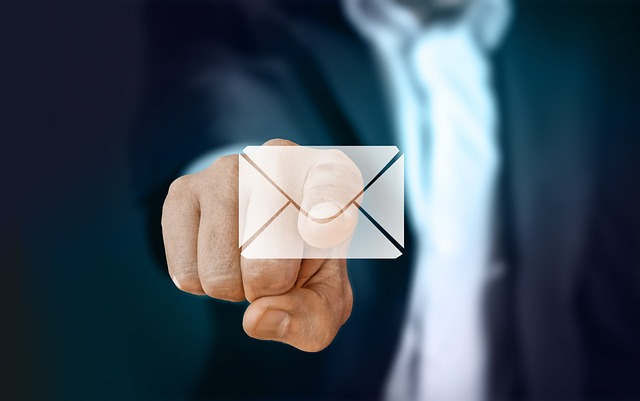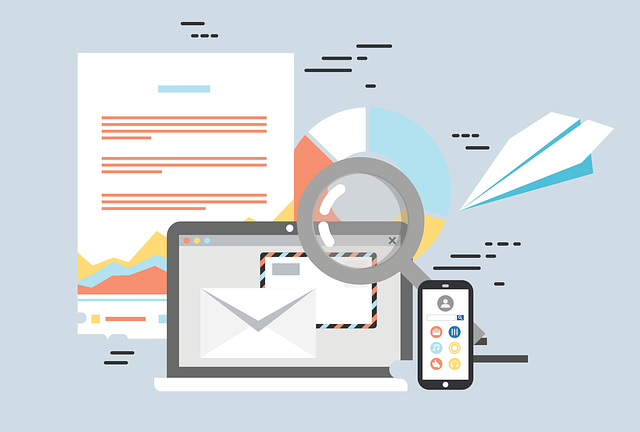Burner email records can break your marketing campaign, as they fill your list with unengaged, temporary contacts.
This not only skews your metrics but also wastes your efforts on leads that will never convert.
While you cannot stop burner email addresses to be used, you can minimize their impact. How to do that? Read our blog post.
What are Burner Emails?
Burner emails are temporary, often anonymous, email addresses used to sign up for online services without revealing one’s personal email address, thereby avoiding spam and protecting privacy.
The Impact of Temporary Email Address Records on Your Email List
The presence of burner emails in your campaign lists can significantly impact your marketing efforts.
For email campaign senders, a list full of disposable email addresses means dealing with high bounce rates, low engagement, and skewed analytics.
This can lead to misallocated resources, as efforts to engage these contacts are essentially aimed at addresses that will soon be inactive or deleted.
Recognizing and filtering out these temporary addresses early can save valuable marketing resources and ensure efforts are focused on genuine prospects, enhancing the effectiveness of campaigns and improving ROI.
Who Uses Disposable Email Addresses

1. Online Shoppers Seeking Deals
Online shoppers often use disposable email addresses to sign up for one-time discounts without cluttering their personal inboxes with promotional emails. This tactic keeps their main email clean while still snagging deals.
2. Privacy-Conscious Individuals
People valuing their online privacy opt for temporary email addresses to sign up for services without revealing their true identity. This approach safeguards their personal information against potential data breaches.
3. Tech Enthusiasts Testing Services
Tech enthusiasts exploring new platforms use disposable emails to avoid spam from trial sign-ups. This allows them to test multiple services without risking their personal email addresses.
4. Job Seekers
Job seekers apply to multiple listings using temporary email addresses to manage responses efficiently. This strategy helps keep their primary email organized and focused on important communications.
5. Digital Marketers Conducting Research
Digital marketers use burner emails to sign up for competitors’ newsletters and services anonymously. This enables them to gather insights without revealing their affiliation or getting their personal inbox flooded with spam.
6. Event Attendees
Individuals attending webinars, online courses, or conferences like eCommerce conferences use disposable email addresses to register. This keeps their personal email free from follow-up marketing emails and spam.
7. Social Media Users Creating Accounts
Social media enthusiasts create accounts using temporary emails to explore platforms without linking their activity to their real email addresses. This method also helps avoid unwanted notifications and emails.
8. Consumers Signing Up for Loyalty Cards
Shoppers signing up for store loyalty cards use disposable email addresses to avoid promotional emails and spam. This allows them to enjoy discounts and rewards without compromising their inbox cleanliness.
Each of these users leverages disposable email addresses to navigate the digital world more smartly and securely, whether to protect privacy, avoid spam, or simply keep their primary inbox tidy.
How to Identify and Avoid Disposable Email Address

1. Implement Email Verification at Sign-Up
To mitigate the impact of disposable email addresses, implement a robust email verification process during sign-up. This step ensures that only valid, long-term email accounts can complete the registration process. Use email verification services that can detect temporary mail and throwaway email addresses in real-time, preventing them from entering your database. This proactive approach keeps your list clean from the start, saving time and resources in the long run.
2. Regularly Clean Your Email List
Cleaning your email list is crucial for maintaining its health and effectiveness. Regularly remove inactive subscribers, bounced emails, and known disposable email addresses. Tools and services designed for email list cleaning can automate this process, identifying and removing fake mail and temporary emails efficiently. This not only improves your engagement rates but also ensures your messages reach genuinely interested recipients.
3. Monitor Engagement and Remove Low-Activity Users
Track the engagement levels of your subscribers, focusing on open rates, click-through rates, and email interactions. Subscribers using disposable emails often show little to no activity. By identifying and removing these low-activity users, you maintain a high-quality list. This strategy enhances your campaign’s performance and ensures your content reaches engaged audiences.
4. Use Double Opt-In for New Subscribers
Implementing a double opt-in process is an effective way to combat the use of disposable email addresses. When users sign up, send a confirmation email that requires an action to complete their subscription. This method verifies that the email account is active and that the owner intends to receive your communications. It significantly reduces the number of disposable emails in your list, as most temporary mail services do not support or follow up on such confirmation requests.
5. Educate Your Audience on the Value of Genuine Subscriptions
Encourage users to use their real email addresses by communicating the value they get from your emails. Highlight exclusive content, early access, discounts, or loyalty rewards that require a valid email account. When users understand the benefits of using their primary email, they’re less likely to resort to disposable email services. This approach fosters a more engaged and committed subscriber base.
6. Set Up a Honey Pot to Trap Spam Bots
A honey pot is a decoy tool designed to attract and identify spam bots that automatically fill out forms on your website with disposable email addresses. This invisible field, hidden from human users, traps bots when they attempt to sign up with fake emails. By catching these automated entries, you can prevent a significant amount of spam from entering your list, keeping it cleaner and more effective.
7. Analyze Sign-Up Patterns for Suspicious Activity
Keep an eye on sign-up patterns and behaviors that may indicate the use of disposable email addresses. Multiple sign-ups from similar-looking email addresses within a short timeframe can be a red flag. Implementing restrictions, detecting if their IPs are using VPN, or additional verification for suspicious patterns can deter the use of throwaway email addresses. This level of analysis and response helps maintain the integrity of your email list, ensuring your efforts are directed toward genuine, interested subscribers.
1. Leverage Advanced Email Filtering Techniques
Utilize advanced email filtering techniques to automatically detect and segregate temp mail and spam emails. These filters can analyze incoming email messages for common characteristics of disposable email services, such as known domains or patterns. By setting up these filters, you ensure that burner email addresses and fake email addresses are caught early, keeping your inbox clean and focused on genuine interactions.
2. Offer Premium Support for Verified Accounts
Encourage users to register with their real email address by offering premium support or additional features to verified accounts. This incentive motivates users to use their personal account over a temporary address or burner mail, as it unlocks benefits that are not available to unverified or temporary email service users. Highlighting the value of full ownership of an account for a certain period can also deter the use of disposable emails.
3. Customize Email Content for Higher Engagement
Tailor your email messages to resonate with your audience’s interests and needs, making it more likely for recipients to use their main email address. Personalized content, based on the recipient’s previous interactions or preferences, ensures that your emails are relevant and engaging. This strategy reduces the likelihood of recipients resorting to fake email addresses, as they won’t want to miss out on content that’s specifically curated for them.
4. Implement Time-Limited Offers to Encourage Immediate Sign-Ups
Create urgency by offering time-limited deals or exclusive content that requires an immediate sign-up. This tactic encourages users to use their real email account to avoid missing out. Highlighting these offers can deter the use of temp emails or throwaway emails, as users will want to ensure they receive these time-sensitive communications in their primary inbox.
5. Use Social Proof and Testimonials
Showcase testimonials and case studies from satisfied customers who have benefited from using their real email address to sign up for your service. Social proof can persuade potential subscribers to use their primary email addresses, as they see the tangible benefits others have gained. This approach helps to build trust and demonstrates the value of being a part of your email list.
6. Conduct Regular Audits of Your Email List
Perform regular audits of your email list to identify and remove inactive subscribers, including those who may have used a disposable email address. This process helps maintain a healthy and engaged email list, ensuring that your communications reach interested parties. Tools that analyze engagement rates and inbox activity can help identify which addresses are no longer active or are likely fake.
7. Foster a Community Around Your Brand
Build a community around your brand by encouraging interaction and engagement through your email campaigns. Invite feedback, run surveys using the right email survey tools, and engage in conversations that make your subscribers feel valued and part of something bigger. When subscribers feel connected to your brand, they’re more likely to use their real email address and less likely to resort to temporary or fake email addresses. This sense of belonging can significantly reduce the inclination to use disposable email services, as subscribers will not want to miss out on being part of the community.
Key Takeaways
- Implement email verification at sign-up to block burner email addresses.
- Regularly clean your email list to remove inactive or fake email addresses.
- Use double opt-in methods to ensure subscribers’ genuine interest.
- Tailor content to encourage subscribers to use their real email addresses.
- Offer incentives for verified accounts to discourage the use of disposable emails.
- Employ advanced filtering techniques to detect and manage spam emails.
- Personalize interactions to build a community and reduce reliance on temporary email services.
- Conduct regular audits to maintain a healthy and engaged email list.
- Leverage social proof to show the value of subscribing with a real email address.
- Create urgency with time-limited offers to prevent the use of temp mail.
Conclusion on burner emails
Navigating the challenges posed by burner and disposable email addresses requires a multifaceted approach. By implementing these strategies, you can protect your email campaigns from the pitfalls of fake and temporary contacts, ensuring your efforts reach genuinely interested subscribers. Now it’s your turn to put these practices into action. Good luck!
FAQ on Burner Emails
Is it good to have a burner email?
Having a burner email can be beneficial for protecting your privacy and avoiding spam email when signing up for untrusted services or temporary offers.
Is burner email free?
Yes, most burner email services offer free temporary email addresses, allowing users to receive emails without revealing their real identity or main email address.
What is a burner email?
A burner email is a temporary, disposable email address used to sign up for services or websites anonymously, helping to keep your primary inbox clean and your personal information private.
Is there a temp mail that really works?
Yes, there are many reliable temporary mail services that provide functional, disposable email addresses, allowing you to receive emails and verify accounts without using your real email address.
Who uses a temporary email address?
Temporary email addresses are often used by individuals seeking privacy, avoiding spam, or testing services without revealing their true identities. They opt for a burner email address for quick sign-ups or when a unique email address is needed for single-use purposes.
Why people use fake email address in communication?
People utilize fake email addresses to protect their personal information from being shared with multiple recipients or to avoid junk emails. Using a disposable email service allows for managing emails more efficiently, reducing the risk of receiving more spam in their primary inbox.
When not to use your personal email address?
It’s advisable not to use your personal email address when signing up for store loyalty cards, subscribing to newsletters, or any situation where you might receive unwanted emails. A disposable email service can help keep your primary inbox clean and your personal information more secure.


